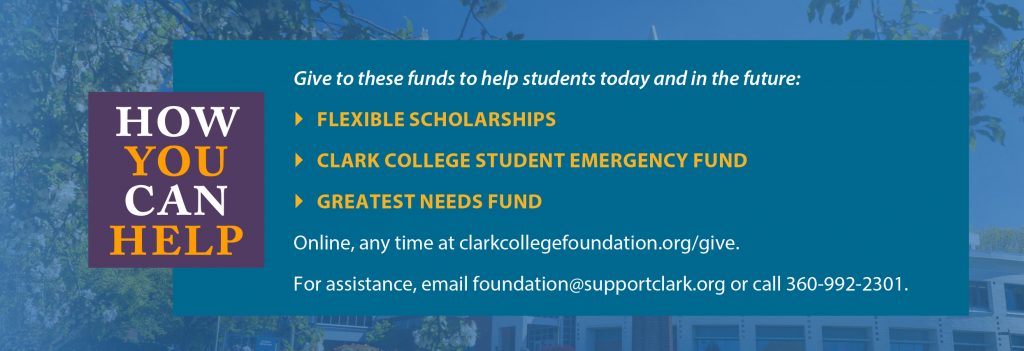The virtual way
Experiencing and supporting higher education from the living room
By Lily Raff McCaulou
Veronica Cortez had just finished her fourth quarter of Clark’s six-quarter nursing program when the COVID-19 pandemic took hold. The fifth quarter started; instead of doing clinical rounds in a local hospital, Cortez found herself—like a lot of Americans—sitting in front of a computer.
Nursing is a subject that requires hands-on training. However, hospitals—facing a protective equipment shortage—stopped inviting students for clinical rotations. Instead of spending two days a week at a mental health facility, Cortez logged on to her computer for an online simulation called Shadow Health, in which she typed her interactions with animated patients.
“It felt silly at first,” Cortez said. “Depending on which type of simulation we were doing, it got kind of frustrating because it would only accept certain wordings; the wordings had to be perfect.”
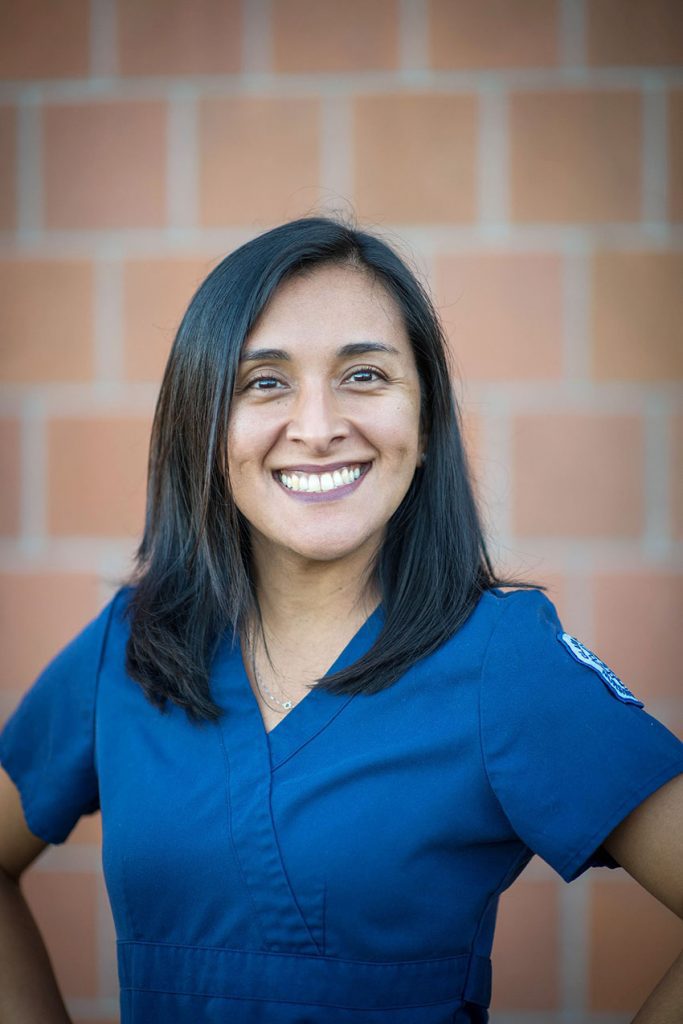
Veronica Cortez, a nursing student at Clark College, says she wants to be out there helping people during the pandemic and beyond. Photo by Veronica Cortez
Between the winter and spring quarters, Clark College shifted 2,000 courses virtually in just two weeks. This massive undertaking required changes at every level. Students had to learn new technologies. Faculty had to rewrite syllabi and adopt new teaching styles. Science instructors went into their labs and recorded videos of experiments that students couldn’t complete in-person. Baking instructors passed out kits of materials so students could practice at home. Staff had to make sure everyone had computers, internet access and the technical support necessary for remote learning. Tutoring, advising and career services all moved online so students could stay on track while at home. Administrators had to make sure all these new modes of instruction upheld the governor’s mandates while meeting educational standards.
“The college has come together and really worked hard to ensure that students receive the instruction they deserve and the support that they need,” said Armetta Burney, interim dean of workforce, professional and technical education.
All that work is paying off. At Clark’s virtual graduation in June, more than 1,500 students received certificates or degrees. More people are considering Clark too, after an almost decade-long decline in enrollment. However, there is still work to do to recover the losses in enrollment.
For Cortez, the all-online spring quarter was chaotic and exhausting. Her 16-year-old daughter was also attending school online, so both of them were suddenly home all day. Cortez, who worked for years as a medical assistant before going to nursing school full time, wasn’t used to sitting all day.
A single online simulation took anywhere from one to two hours and if she didn’t get it right, she had to redo the whole thing. Cortez missed the excitement of being in a hospital. She missed the camaraderie of her fellow nursing students who used to gather after their rotations to debrief and share what they had learned.
Still, Cortez found herself learning new skills. She enjoyed the satisfaction of mastering new technology. Though she felt overwhelmed at times, Clark College regularly reminded Cortez that help was available if she needed it. Cortez felt buoyed by online pep talks from nurses who encouraged the students. She finished the quarter on track to graduate in December.
“It definitely reinforced that I did make the right decision by choosing this profession,” Cortez said. “I feel like I am needed. I want to be out there helping people, and I think I’ll be ready to do that.”
Removing barriers
Clark College has had online classes for years. Entire programs, such as network technology, have been almost entirely online.
Jim Martin ’68 is a Clark donor and 2012 Outstanding Alumni Award recipient who supported online learning even before the pandemic.
“I wanted to make higher education available to as many people as possible – realizing that family circumstances might be such that attending class might not always be possible,” he said.
Martin said he expects online learning to continue to be a popular option well after the COVID-19 pandemic is under control.
“This has been a grand demonstration of the productivity and learning that can take place at home,” Martin said, “saving obvious costs and expanding access to many more students.”
Other programs had to evolve rapidly during the pandemic. Most of the career and technical education programs such as diesel and mechatronics, for example, had no online presence, according to Burney.
“Lectures were face-to-face and labs were face-to-face,” she said of those programs. “Now, all of our classes are taught at a minimum in a hybrid modality. Lectures are online and some labs are online, too.” To keep participants socially distanced, in-person classes adapted. In some areas on campus, Plexiglas dividers were installed to keep students apart, adding to their safety.
Burney is inspired by the resilience and adaptability of Clark’s instructors, many of whom had to get creative. She speaks about a chemistry instructor who thought of a new way to keep students engaged during remote learning.
“He’ll be in the lab and students, who will be remote, will have to explain to him what the next steps are. So he’ll be simulating the lab based on their guidance,” Burney said. “I thought that was very innovative.”
Not every course was able to transition to remote learning. Some in-person labs scheduled for the spring had to be postponed. By the time the quarter ended, the college had a plan. The spring term ended June 18. The next day, some labs, which had been postponed in the spring, started meeting in person. By that time, classrooms and other teaching areas were retooled to minimize the risk of transmitting COVID-19.
Adapting to crisis
Angie Bailey, nursing faculty department chair, said her department faced an especially steep challenge in moving its courses online. Nursing is a six-term curriculum where students are admitted three times a year, so every nursing course is offered each quarter. This meant that over a two-week period in the spring, all 28 nursing courses had to transition to virtual learning. Luckily, nurses are well suited to adapting to a crisis.
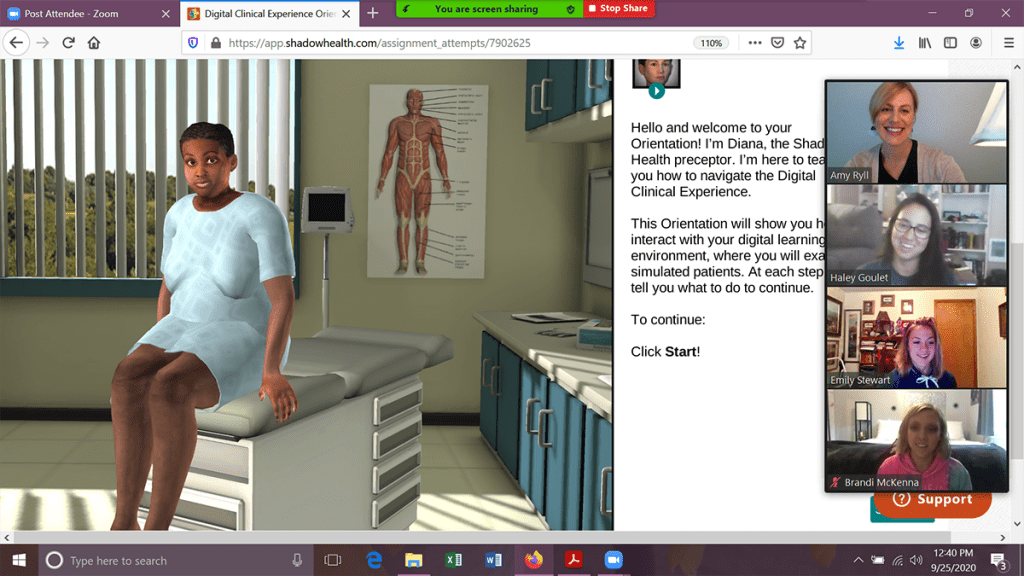
Students are now learning in virtual clinical sessions with interactive software, like this one with Clark nursing professor Amy Ryll.
“I think there’s a lot to be said for the flexibility and also the caring and compassion that nurses have to have,” Bailey said.
For theory courses, instructors held live video conferences of lectures and shared recorded videos and online message boards for discussions.
In labs, nursing students learned to take blood pressure, insert an IV, give injections, care for wounds and perform other important skills. Lab instructors used a combination of professionally produced instructional videos, some remote video conferencing, and, in certain cases, guided practice at home with distributed supplies.
For clinical courses, the college spent more than $35,000 on virtual simulation software, which students like Cortez used in lieu of hands-on clinical experience. Bailey said the pandemic has underscored the importance of Clark’s Nursing program to the region.
“We need to have nurses and we need them to be well-prepared,” Bailey said.
Helping the helpers
Clark, like other community colleges, has had challenges with enrollment in recent years. Last summer, the college was within 96% of its enrollment targets—which were set before the pandemic—for the first time in several years. However, the fall 2020 enrollment numbers were lower than projected. As of late September, the college was 10% below projections for full-time enrollment and 9% below for Running Start projections. Overall, community colleges across the nation are seeing an average of 7.5% drop in enrollment over last year, according to Inside Higher Education.
Some of the lower numbers may have been due to a new centralized software system the college has struggled with, compounded with a new state software system that handles financial aid records that was not performing properly before the term began. A number of students and potential students had difficulty getting answers to their questions, accessing financial aid in a timely manner or registering for classes.
Community colleges frequently see a decline in enrollment during periods of robust economic growth. During a recession, on the other hand, workers turn to community colleges to help them forge new career paths.
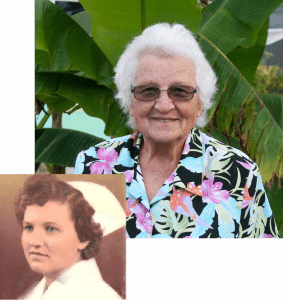
Carolyn Mosebar worked for 40 years as a nurse. She gives annually to the Mosebar Scholarship for nurses.
Carolyn Mosebar ’64, who gives annually to the Mosebar Scholarship for nurses, worked for 40 years as a nurse. When she retired, she decided to give back to the program that had given her such a rewarding career. Her husband, a state trooper, died in the line of duty. He had paid her way through nursing school and supported her idea to fund a scholarship.
“I just thought it was a way to honor him; it’s named after both of us,” she said.
Before the pandemic, Mosebar volunteered at a local school for the blind, helping children do craft projects. She misses interacting with the kids. However, she continues to get satisfaction from giving to Clark College, knowing how hard everyone is working to further their education while adjusting to the realities of the pandemic.
“I’m very proud of Clark for continuing with those programs,” she said. “I try to keep up my donations because I know it’s tough on everyone right now. I really feel like almost all people who go to college will need some help along the way and if I can contribute to that, well, I might as well. I want to help people who have the interest and character to work in nursing.”
E-learning is here to stay
Burney credits the college’s ability to switch much of its instruction online quickly. She also predicts that enrollment numbers—like what Clark saw during its summer quarter—will get better.
“Also, it’s attributed to those graduating (high school) seniors who maybe had been planning on going out of town or even attending a university but due to expense and everyone (at other institutions) in remote operations, they decided to save those dollars and go to Clark,” Burney added.
Kelly Love, chief communications officer at Clark, said Clark has always been a cost-effective way to get a quality education, and that message is resonating with more people now.
“We have a rich tradition at Clark College in being the affordable, excellent option with small class sizes for students to spend far less money in their first and second year…. That’s not a new story. But depending on the family and the student, they may be looking at that with fresh eyes,” Love said.
Washington expanded its college grant program this year to make college affordable for more families. A family of four that earns less than $50,000 can send students to community college at no cost to them. Families earning up to $90,000 per year can get tuition reduced.
Love said that Clark faces communication challenges in the coming year. For now, local K-12 schools are online, so it’s harder to reach out to high school students and make sure they consider Clark.
“Long term, the best marketing approach is really to be highly present, highly visible and make entry points as easy as possible. You don’t have to apply and wait. At a community college, you’re in,” Love said.
Clark is at an advantage after having spent the last few years shifting to a new model of education called guided pathways. The framework streamlines the red tape for enrollment and bolsters advising to keep students moving toward graduation. Love predicts that changes made now will pay similar dividends for future students.
“The last five months have probably felt like three years for everyone on staff,” Love said with a chuckle, given the results of COVID-19, academic changes and other challenges at Clark. But, even after the pandemic ends, more students will be able to attend Clark because of the ways the college has expanded its online offerings.
“People will look back on this,” Love said, “and say, ‘we did some of the hardest and some of our best work ever.’”
*********
 Lily Raff McCaulou is a journalist whose writing has appeared in The New York Times, The Atlantic, The Guardian and Rolling Stone. She lives in Bend, Ore. Visit her online at www.lilyrm.com.
Lily Raff McCaulou is a journalist whose writing has appeared in The New York Times, The Atlantic, The Guardian and Rolling Stone. She lives in Bend, Ore. Visit her online at www.lilyrm.com.
